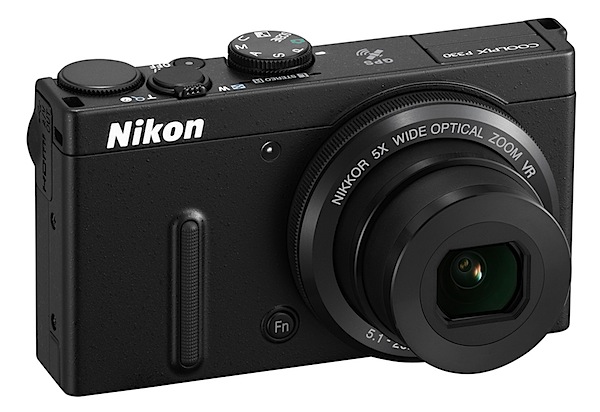Ein Beitrag von: Tim Hölscher
Mitte der neunziger Jahre reiste ich mit meinem Vater zum ersten Mal nach Albanien, um Hilfsprojekte zu besuchen, für die er verantwortlich war. Mit dem VW-Bus setzten wir damals von Korfu aus über nach Sarandë und bereisten für ein paar Tage das Land.
Die Erinnerung an diese Reise ist bruchstückhaft, was sich aber eingeprägte, war diese unglaubliche Anzahl kleiner, pilzartiger Bunker, die einfach überall im Land verstreut waren. Sie säumten Straßen, wuchsen mitten in Städten aus dem Boden und reihten sich kilometerlang an den Stränden der albanischen Adriaküste.
Als ich mich dann Jahre nach dieser Reise während meines Fotografiestudiums an der FH Bielefeld intensiv mit der Lochkamera als kreativem Instrument befasste, waren neben Fotoexperimenten mit 60-Loch-Ringkameras, Liveview- und Postpaket-Lochkameras plötzlich wieder diese Bunker in meinem Kopf und die Idee zu meinem Fotoprojekt „Albanische Landschaften“ war geboren.

Ich wollte diese destruktiven Bauwerke, die hunderttausendfach vom albanischen Diktator Enver Hoxha zwischen Anfang der 70er und Mitte der 80er Jahre zum „Schutz vor Feinden des Sozialismus“ errichtet wurden, zum ersten Mal in ihrer Existenz einem realen Nutzen zuführen.
Plötzlich waren die 750.000 kleinen Betonpilze, die nie genutzt wurden, da der Feind bis zum Tode Hoxhas Mitte der achtziger Jahre nicht auftauchte, nicht mehr nur stumme Zeugen der sozialistischen Ära Albaniens, sondern, in ihrer Funktion als Lochkamera-Rohlinge, kreative Instrumente.
Ich wollte mit ihnen Landschaftsfotos erstellen und den Blick aus ihren Schießscharten auf Fotopapier bannen. Die Tatsache, dass ich die Gebäude selbst zu Kameras umbauen wollte, verlieh meinem Vorhaben noch eine weitere konzeptionelle Ebene:
Es gab in meinen Augen keine bessere Möglichkeit, das fotografierte Bild mit dem Ort seiner Entstehung zu verbinden und so mit dessen Geschichte aufzuladen, als den Ort selbst als Kamera zu verwenden und das Papier auszustellen, das wirklich die Reise nach Albanien angetreten hatte.

Von der Idee zur Umsetzung – Oder: Wie mache ich aus einem albanischen Bunker eine funktionierende Kamera?
Nach einigen „Trockenübungen“ mit aus Teichfolie gebastelten Lochkamera-Zelten, in denen ich mir die theoretische Machbarkeit meines Plans noch einmal praktisch vor Augen führen konnte, stand der Umsetzung meines Projektes nichts mehr im Wege – dachte ich…
Wie aufwändig und kompliziert es aber tatsächlich ist, diese kleinen, recht dunklen Orte mit einer Öffnung zum Betreten und einer Öffnung zum Beobachten der Umgebung zu Lochkameras umzufunktionieren, war mir vor Beginn meiner Arbeit nicht wirklich klar.
Klar war lediglich, dass ich gern großformatige Positivbilder in Farbe produzieren wollte. Während ich in meinen bisherigen Lochkamera-Arbeiten mit kleineren Formaten auf Film oder Schwarzweiß- und Colorpapier gearbeitet hatte, brauchte ich dieses Mal definitiv größere Formate, da meine „Kameras“ einen Innendurchmesser von ca. 1,3 m hatten und ich entsprechend große Motive fotografieren wollte.
Unter diesen Voraussetzungen kam eigentlich nur ein Material in Frage: Das – Ende 2011 bedauerlicherweise eingestellte – Positivpapier Ilfochrome. Es erlaubte mir, großformatige Color-Unikate mit meinen Bunkerkameras herzustellen – ohne den Umweg über ein Negativ.
Die erste Reise nach Albanien trat ich zusammen mit meinem Kollegen Kristian Barthen im Oktober 2009 an. Ausgerüstet mit einer 30m-Rolle Ilfochrome-Papier, einer Ilford CAP-40 Entwicklungsmaschine für Teststreifen, hunderten Metern Klebeband und einer Rolle Verdunkelungsfolie, alles gut verstaut in einem VW Bus, ging es über Italien mit der Fähre nach Albanien.
Die Aufgaben während unserer Reise durch das Land waren klar verteilt: Der Fahrer konzentrierte sich auf die „speziellen“ Straßenverhältnisse, während der Beifahrer nach geeigneten Bunkern Ausschau hielt. Natürlich hätte das Konzept der Arbeit praktisch mit jedem Bunker funktioniert, allerdings bot die gigantisch große Anzahl die Chance, diejenigen auszuwählen, bei denen der Ausblick durch die Schießscharten zusätzlich ein interessantes Bild versprach.

Hatten wir einen vielversprechenden Kandidaten gefunden, war die Vorgehensweise fast immer dieselbe, da die Bunker zwar nicht immer komplett identisch, aber doch in den meisten Fällen sehr ähnlich waren.
Der erste Schritt bestand in der Regel darin, einen Stein oder ähnliches durch die Schießscharte ins Innere zu werfen, um größeres Getier zu vertreiben. Ein Bunker bietet im Sommer ein schattiges Plätzchen und im Winter einen Unterschlupf – daher war dieser kleine „Weckruf“ in vielen Fällen äußerst angebracht, um später im abgedunkelten Bunker nicht zu viel Gesellschaft zu haben. Allein war man jedoch nie.

Anschließend wurde das im Inneren benötigte Material in den Bunker gebracht: Lichtdicht verpacktes Fotopapier, eine Leerrolle für das belichtete Material, zwei Stative und eine weiße Holzplatte als Projektionsfläche sowie ein kleiner Hocker für meinen Aufenthalt im Bunker während der Belichtung.
In die Schießscharte wurde ein Holzbrett eingesetzt, in dessen Mitte eine Irisblende montiert war. Die Ränder wurden extrem sorgfältig abgedichtet, weil die Lochblende für das eigentliche Foto nur etwa einen Millimeter weit geöffnet werden sollte und deshalb jeder Spalt eine Konkurrenz für das eigentliche Loch dargestellt hätte. Im Inneren des Bunkers wurde eine weiße Holzplatte als Projektionsfläche mit Hilfe von Stativen gegenüber der Schießscharte positioniert.

Sobald dieser grundlegende Aufbau erledigt war, konnte die eigentliche Arbeit im Inneren beginnen. Mein mitgereister Kollege Kristian Barthen begann, den Bunkereingang von außen lichtdicht zu verschließen, während ich mich im Inneren des Bunkers auf einen längeren Aufenthalt einrichtete.
Sobald der Eingang einigermaßen verschlossen war, bot sich bei weit geöffneter Irisblende nach kurzer Gewöhnungszeit für die Augen ein eindrucksvolles Bild: Das Innere des Bunkers war komplett erfüllt mit einem Abbild der Landschaft, die der Schießscharte gegenüberlag.

Die Projektion beschränkte sich nicht auf die Holzplatte, sondern erfüllte den gesamten Raum. Da ich die Breite der Platte recht genau auf die Innenmaße des Bunkers angepasst hatte, war der Bewegungsspielraum zur Auswahl eines Bildausschnittes sehr begrenzt. Meine Aufgabe als Fotograf im Bunkerinneren beschränkte sich aus diesem Grund eher darauf, das von der Schießscharte vorgegebene Bild im Inneren des Bunkers „einzufangen“, ohne dabei allzu viel an der Komposition des Bildes arbeiten zu können.
Tatsächlich wurde dieser Aufnahmebereich meiner Kamera schon zu Zeiten der Diktatur festgelegt, als die Architekten der Bunker über die Ausrichtung der über 750.000 Schießscharten entscheiden mussten – eine Frage, deren Lösung aufgrund der unzähligen Standorte eine absolute Mammutaufgabe gewesen sein muss.


Sobald der Bunker komplett abgedichtet war, wurde die Irisblende bis auf einen Millimeter verschlossen und mit einem Tageslichtfilter versehen, der das einfallende Licht nochmals um eine Blende verringerte. Im Bunkerinneren fixierte ich das Ilfochrome-Papier auf der Projektionsfläche. Da es im unentwickelten Zustand eine dunkelbraune Oberfläche hat, war von der Landschaftsprojektion nun nicht mehr viel zu erkennen.
Versuche mit Teststreifen, die dank der mitgebrachten Entwicklungsmaschine im zum mobilen Labor umgebauten Bulli direkt am Bunker entwickelt wurden, hatten eine Belichtungszeit von ca. 2 Stunden bei strahlendem Sonnenschein ergeben. Diese Zeit musste ich also definitiv unbeweglich unterhalb der Schießscharte verharren, um im Anschluss das Papier wieder von der Fläche zu entfernen und es lichtdicht zu verpacken.


Die genaue Belichtungszeit wurde flexibel an die äußeren Bedingungen angepasst – mehr Wolken am Himmel bedeuteten weniger Lichteinfall und somit eine Verlängerung meiner „Sitzung“. Am Rande bemerkt machte die Tatsache, dass das Bleichbad im P-30 Prozess zur Entwicklung der Probestreifen Schwefelsäure enthält, den anschließenden Aufenthalt im Auto zu einem unangenehmen Unterfangen, da der Geruch nach faulen Eiern sich erstaunlich lange im Wageninneren halten konnte.
Die Ergebnisse
Natürlich bringt diese spezielle Art und Weise, Fotografien zu erstellen, Widrigkeiten und körperlichen Entbehrungen mit sich. Der Augenblick, der sie jedoch jedes Mal aufs Neue lohnenswert erscheinen lässt, ist der Moment, wenn die fertigen Unikate aus der Maschine laufen und zum ersten Mal betrachtet werden können.
Aus mehrwöchigen Reisen mit vielen Strapazen und noch mehr Erlebnissen werden in diesem Moment Landschaftsfotografie-Unikate, die durch den Ort ihrer Entstehung aufgeladen sind mit der Geschichte eines ganzen Landes.



Die Tatsache, dass die Bauwerke selbst das Bild liefern und ich es lediglich „abholen“ muss, entfacht meine Faszination für diese Art der Fotografie immer wieder aufs Neue. Jeder Ort oder Gegenstand, der sich verdunkeln und mit lichtempfindlichem Material bestücken lässt, kann eine Kamera sein, die mit ihrem Motiv auf besondere Weise verbunden ist. Dies lässt im wahrsten Sinne Raum für unendlich viele künstlerische Konzepte.
Wer sich nach diesem Bericht intensiver für meine Bunkerbilder sowie weitere Arbeiten aus den letzten sechs Jahren interessiert, dem sei mein gerade im Zentralverlag Berlin erschienenes Buch „Experimentelle Wege zum Bild“* ans Herz gelegt (auch über meine Website erhältlich). Darin enthalten sind neben dieser Arbeit viele verschiedene Ansätze auf meiner Suche nach alternativen Wegen zur Bilderstellung, die sich etwas abseits der konventionellen Fotografie bewegen.
* Das ist ein Affiliate-Link zu Amazon. Wenn Ihr darüber etwas bestellt, erhalten wir eine Provision, Ihr zahlt aber keinen Cent mehr.

kwerfeldein – Fotografie Magazin








![]()


































































You must be logged in to post a comment.